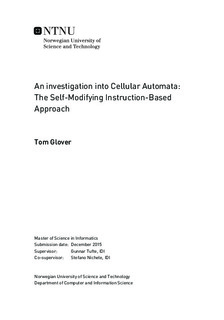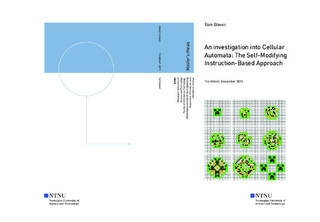| dc.description.abstract | In this thesis we investigate a method for genotype representation in cellular
automata. This method is inspired from gene regulation process in biology and
is called self-modification. This is then combined with instruction-based approach
to form SMIBA.
In order to test this new method, SMIBA together with IBA and TT was
tested on a number of problems relevant in artificial life. This firstly, being the
problems of replication and of development, which are seen as vital for selfreplicating
machines. Secondly, these two problems of replication and development
are then combined into a new novel problem, which is then subsequently
used to test the different methods.
SMIBA was seen to perform well, in comparison to the other methods, on
all problems tested. SMIBA and IBA were also shown to scale exceptionally well
when incrementing maximum possible states of the CA, often even performing
better. Further properties in SMIBA of delayed development and hierarchy were
also identified. | |

